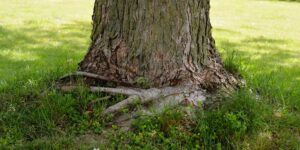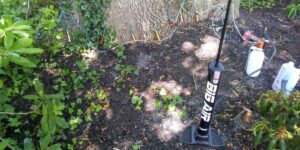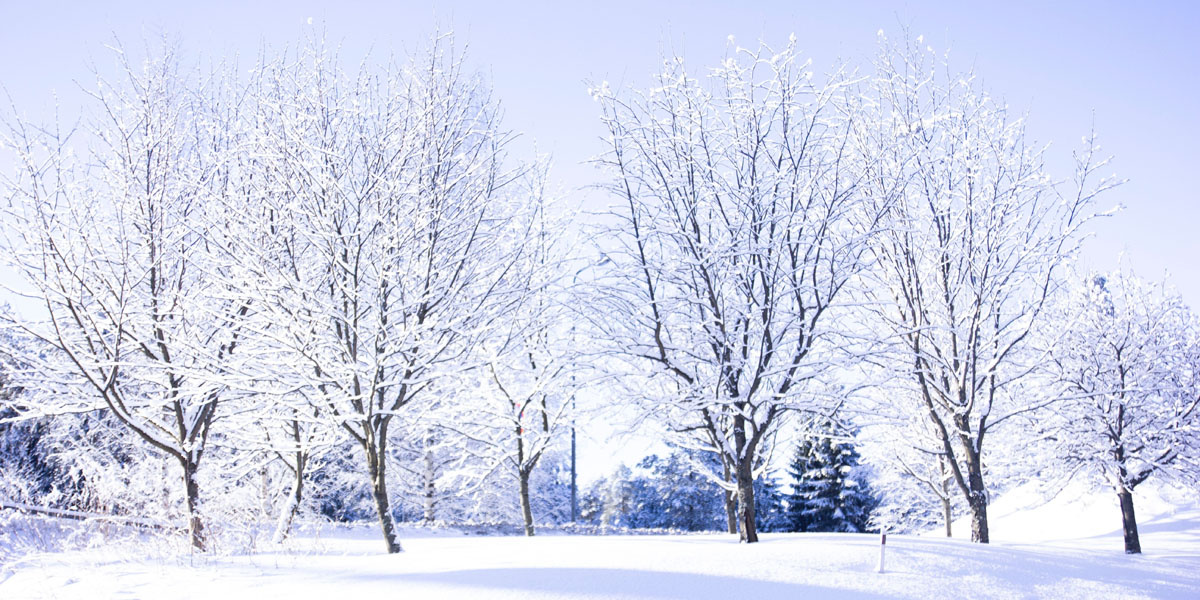Cold winds, icy storms, and bright winter sun can be brutal on evergreens in Morris County. Without protection, shrubs and trees often suffer winter burn—leaves turn brown, needles drop, and entire sections may die back by spring.
The good news? A simple anti-desiccant treatment can protect your evergreens, locking in moisture and giving them the strength to withstand harsh conditions. If you want your landscape to stay healthy and vibrant year-round, this step is one of the smartest investments you can make.
Key Takeaways
- Broadleaf evergreens like boxwood, rhododendrons, and hollies in Morris and Essex counties are most susceptible to winter desiccation.
- Apply anti-desiccant treatments in late fall when temperatures are 40-50°F with no rain expected.
- You can’t treat every evergreen – never apply anti-desiccants to blue spruce or other evergreens with waxy needle coatings.
- Anti-desiccant sprays work best when combined with proper watering, mulching, and physical barriers for comprehensive winter burn prevention.
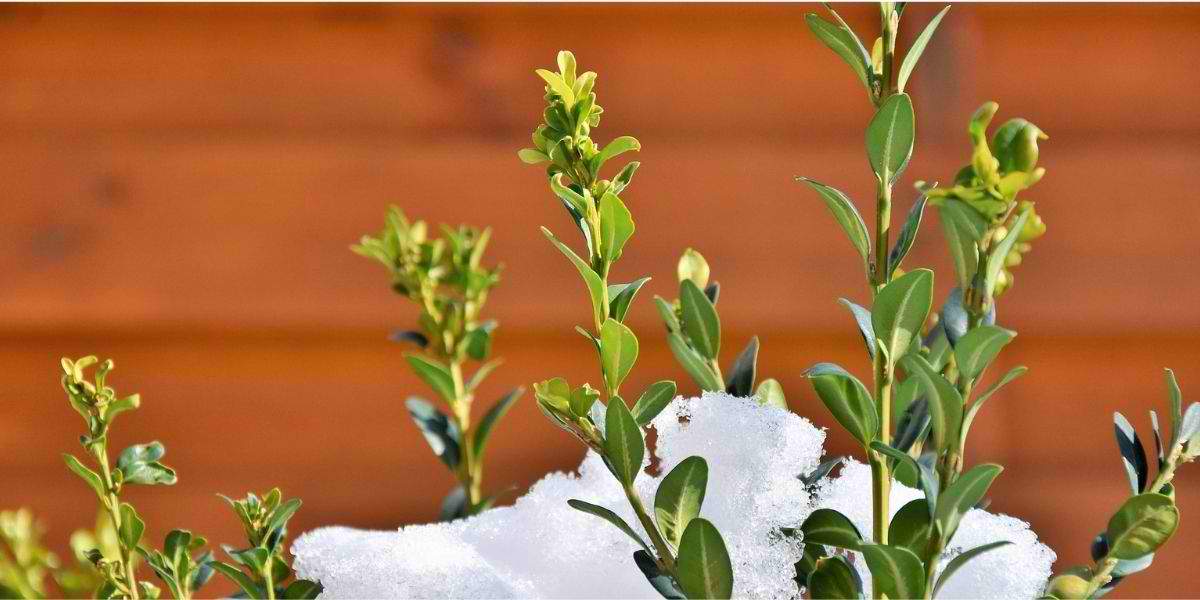
Snow cover provides natural insulation for evergreens, but additional protection may be needed in exposed areas.
Why Tree Care Is Important for Evergreens Before Winter
It may be fall now, but winter is heading our way, making this a good time to develop a plan for protecting your woody perennials and trees over the cold months ahead. That plan should include:
- General winter tree and shrub care (see our winter tree and shrub care tips for details on good practices, such as mulching and watering for winter protection)
- Preparations to deal with ice-covered trees
- Protecting your evergreen plants from dehydration (also called winter burn or desiccation) by applying an anti-desiccant
What Are Anti-Desiccants?
Anti-desiccants, also called anti-transpirants, are surface sprays that help preserve evergreen foliage from excessive winter drying and protect against winter burn. During winter dormancy, many trees remove or reduce water from their internal tissues because they are not actively growing above ground.
While drier internal plant tissue can protect trees and shrubs from winter freezing and rupturing, it can damage evergreen foliage. The damage can be especially severe when combined with road salt, drying winds, and leaf scorch from the reflected glare of snow.
PRO TIP: According to Rutgers Extension research, anti-desiccant treatments can reduce plant moisture loss by 15-20% during winter months when properly applied to appropriate plant species.
Which Plants Benefit from Anti-Desiccant Sprays
There are several types of evergreen trees and shrubs that benefit from anti-desiccant sprays, including:
- Hollies (Ilex species)
- Rhododendrons
- Boxwood (Buxus species)
- Laurels (Prunus laurocerasus)
- Japanese pieris or Andromeda (Pieris japonica)
They are also beneficial as winter protection for coniferous evergreens, such as:
- Yew (Taxus baccata)
- Pine (Pinus species)
- Arborvitae (Thuja occidentalis)
IMPORTANT: Do not treat evergreens that have waxy coatings on their needles, such as blue spruce (Picea pungens), with anti-desiccants. Always check the recommended species and warnings before applying and always learn about your choice of anti-desiccant spray before you start to apply it.
When Is the Best Time to Apply Anti-Desiccants?
The best time to apply an anti-desiccant spray is:
- In late fall, before freezing weather sets in (and before the soil freezes)
- Before snowfall
- When the weather is clear but not hot, around 40 to 50 degrees
- When there is no recent rain or wet foliage
- There is no rain expected in the immediate future
PRO TIP: For mild falls and winters, wait until dormancy has completely set in before spraying. It’s harder to tell with conifers when they have gone fully dormant, and you don’t want to smother their needles if they’re still actively transpiring.
How to Apply Anti-Desiccants Correctly
Anti-desiccants are applied as sprays that coat evergreen foliage with a thin, protective wax layer. For the treatment to work, the spray must be applied evenly and thoroughly across all exposed surfaces.
Because this coating gradually breaks down, one application is rarely enough to last the entire season. Rain, snow, and even brief warm spells can speed up its breakdown. That’s why an initial treatment in November often needs a follow-up in mid-winter – usually January or February – to keep your evergreens protected through the harshest months.
“We customize anti-desiccant applications based on your specific plants, location, and exposure risks. The timing and application method are critical for effectiveness, which is why professional application ensures the best results for protecting your evergreens from winter burn.” – Konrad Polakowski, Licensed Tree Expert at Alpine Tree
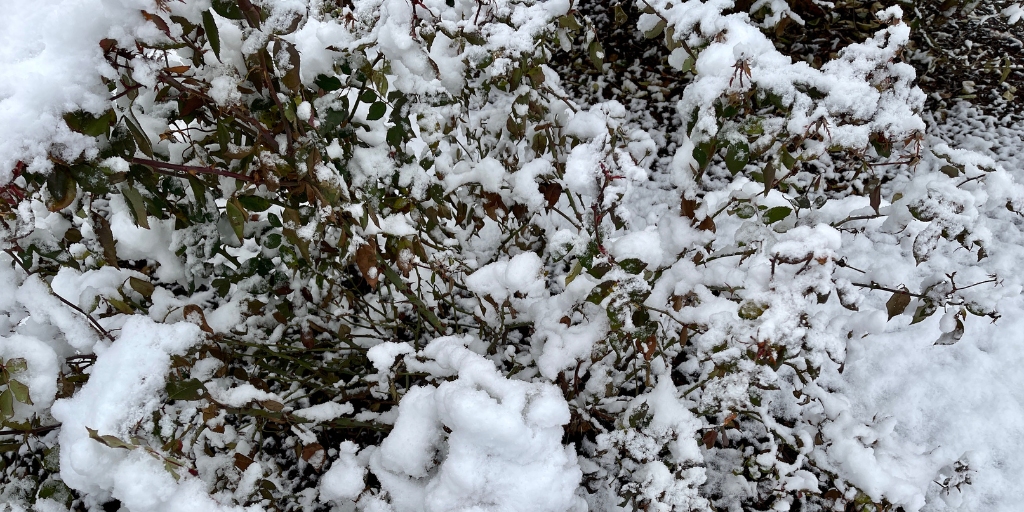
Winter provides numerous stressors for trees.
What Other Proven Tree Care Tips Help Protect Evergreens in Winter?
Evergreens in Morris County face more than just cold temperatures in winter. They’re also vulnerable to dehydration, windburn, salt damage, and heavy snow. Anti-desiccant sprays can help, but they work best as part of a bigger winter tree care plan. Some of the things we recommend doing for your trees from winter and salt problems include:
- Water Your Trees and Shrubs: Water your plants in winter if there is an extended period of dry weather and temperatures that reach above freezing. Always irrigate early in the day, after temperatures have risen and before they drop in the afternoon
- Wrap Trees: Using burlap wraps and windscreens can protect your tree from the drying effects of high wind and road salt spray. Wraps can also assist in protecting your trees and shrubs from developing frost cracks.
- Mulch Around Trees: Proper mulching around your evergreens also provides important winter protection by insulating roots and maintaining soil moisture. Apply 2-4 inches of organic mulch, such as wood chips, around plants before winter, keeping it 4-6 inches away from trunks to prevent pest problems.
- Hire Professional Snow Removal: Hiring a snow removal company that will keep your trees front and center of mind is an easy way to keep them healthy in the winter. Experts in snow removal will protect your trees from snowbank damage while still removing snow from driveways and parking lots.
Frequently Asked Questions About Anti-Desiccants
What’s the difference between anti-desiccant and anti-transpirant?
Anti-desiccant and anti-transpirant are two terms for the same type of product. They both refer to protective sprays that reduce water loss from evergreen foliage during winter, helping prevent winter burn and desiccation damage.
How do I know if my evergreens have winter burn damage?
Winter burn typically appears as browning that starts at leaf or needle tips and progresses inward. The damage is usually most severe on the south and southwest sides of plants, where winter sun exposure is greatest. Unlike pest damage or disease, winter burn affects the entire exposed area uniformly.
Can I apply anti-desiccant spray myself?
You can apply anti-desiccant yourself, but it is not highly recommended. While homeowners can purchase anti-desiccant products, professional application ensures proper timing, coverage, and product selection. Improper application can damage sensitive plant species, and professionals know which evergreens should not be treated.
Do all evergreen plants need anti-desiccant treatment in New Jersey?
No, not all evergreens need anti-desiccant treatment. Plants with natural waxy coatings, like blue spruce, should never be treated. Broadleaf evergreens, like boxwood and rhododendrons, benefit most, especially when newly planted or in exposed locations.
When is it too late to apply anti-desiccant for winter protection?
Anti-desiccant should be applied in late fall before freezing weather sets in. Once consistent freezing temperatures arrive, it’s generally too late for effective application. The ideal temperature range is 40-50°F with no rain expected.

Professional winter protection helps maintain healthy, attractive evergreen landscaping year-round.
Protect Your Investment This Winter with Alpine Tree Service
We offer winter protection services for your trees and shrubs, including professional anti-desiccant application to prevent winter burn. If your yard is too large for you to do all the work to protect your plants from winter weather, give us a call, and we’ll take care of it for you.
Our ISA Certified Arborists provide comprehensive winter protection services as part of our tree health management program. As one of New Jersey’s TCIA Accredited tree service companies, we have the expertise to keep your evergreens healthy through harsh winter conditions.
Call Alpine Tree Service at 973-964-7798 or request your free consultation today. Our team will assess your landscape’s specific needs and develop a protection plan that prevents winter burn and keeps your plants healthy all winter long.



